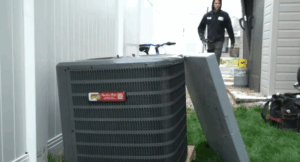Our Blogs

The Hidden Costs of a Leaky Toilet (and How to Spot and Fix Them)
Leaky toilets are one of those sneaky home issues that may seem minor but can quietly drain your wallet and even threaten your comfort at

The Hidden Dangers of Harsh Drain Cleaners on Your Plumbing
Clogged drains are a common frustration for homeowners, especially when standing water refuses to drain or foul odors start spreading throughout the house. The quick

Choosing the Right HVAC System for Your Arizona Home
When it comes to staying cool in Arizona’s sweltering heat, having the right HVAC system isn’t just a luxury—it’s a necessity. Homeowners across the Phoenix

December 2024 Promotions
[ Free Reverse Osmosis System ] [ $29 Single Drain Clear ] [ $299 Pipe Jetting ] [ $150 Off Whole Home Surge Protector ]

November 2024 Promotions
[ Get $2,500 OFF New HVAC System ] [ Free RO System with New Water Softener ] [ $29 Home Electrical Safety Inspection ] [

How To Cool Your Home With A Whole House Fan
If you’re looking for options to cool your house, this video is for you. In this episode, we’re talking about whole-house fans. We’ll go over

Should I Cover My Air Conditioner For The Winter?
When the weather gets cold, you start thinking less about cooling off and more about warming up. That means the air conditioner shuts down and

The Best Way To Cool Your Attic
Attic fans are one of those things that few people think about. But they can make a huge difference if you live in a place

Is The Air In Your Home Safe To Breathe?
The United States Environmental Protection Agency has said that the air in your home might not be as clean as you think. In fact, it

What Refrigerant Does Your AC Use, And Why You Should Care?
If you’re anything like most people, you have no idea what refrigerant is. Or you’ve heard the word and know that it has something to

An Air Conditioner Can Only Do So Much
Have you ever felt that your air conditioner can’t keep up when the temperature gets over 95 degrees? If so, you aren’t alone. In this

5 Common Questions on Tuning Up Your Air Conditioner
One of the best ways to avoid unexpected breakdowns and keep your home comfortable during the hot summer months is to stay on top of


